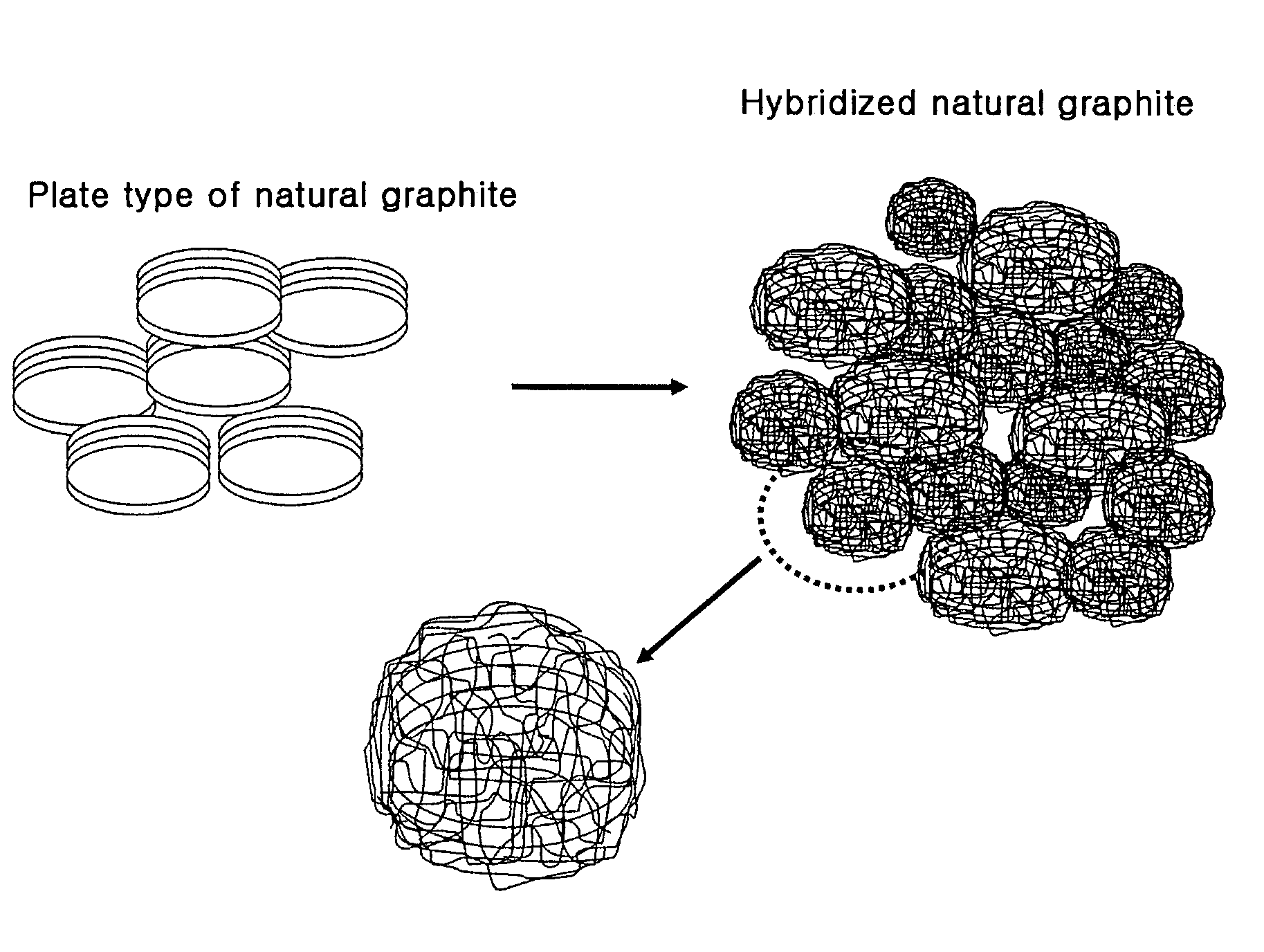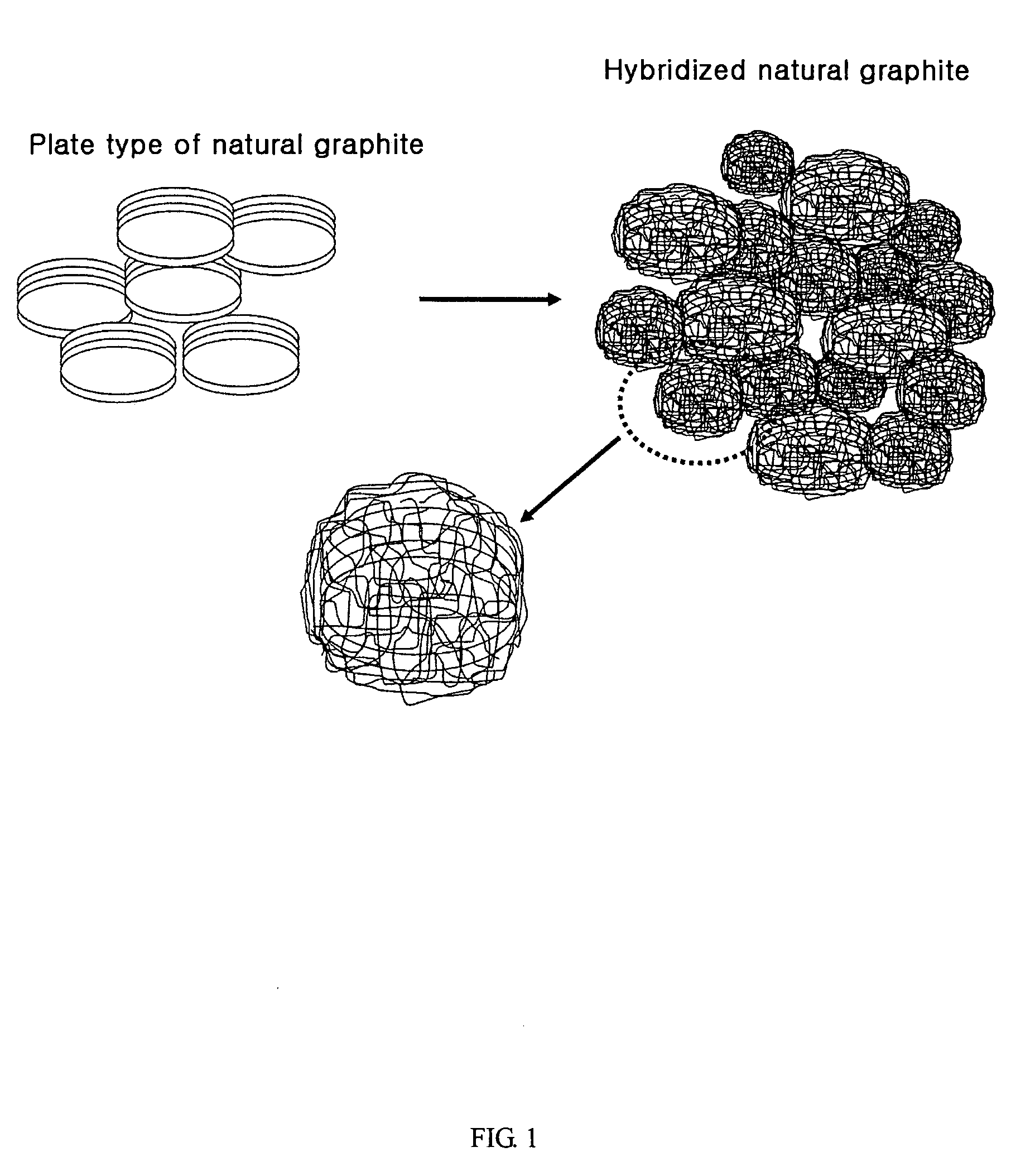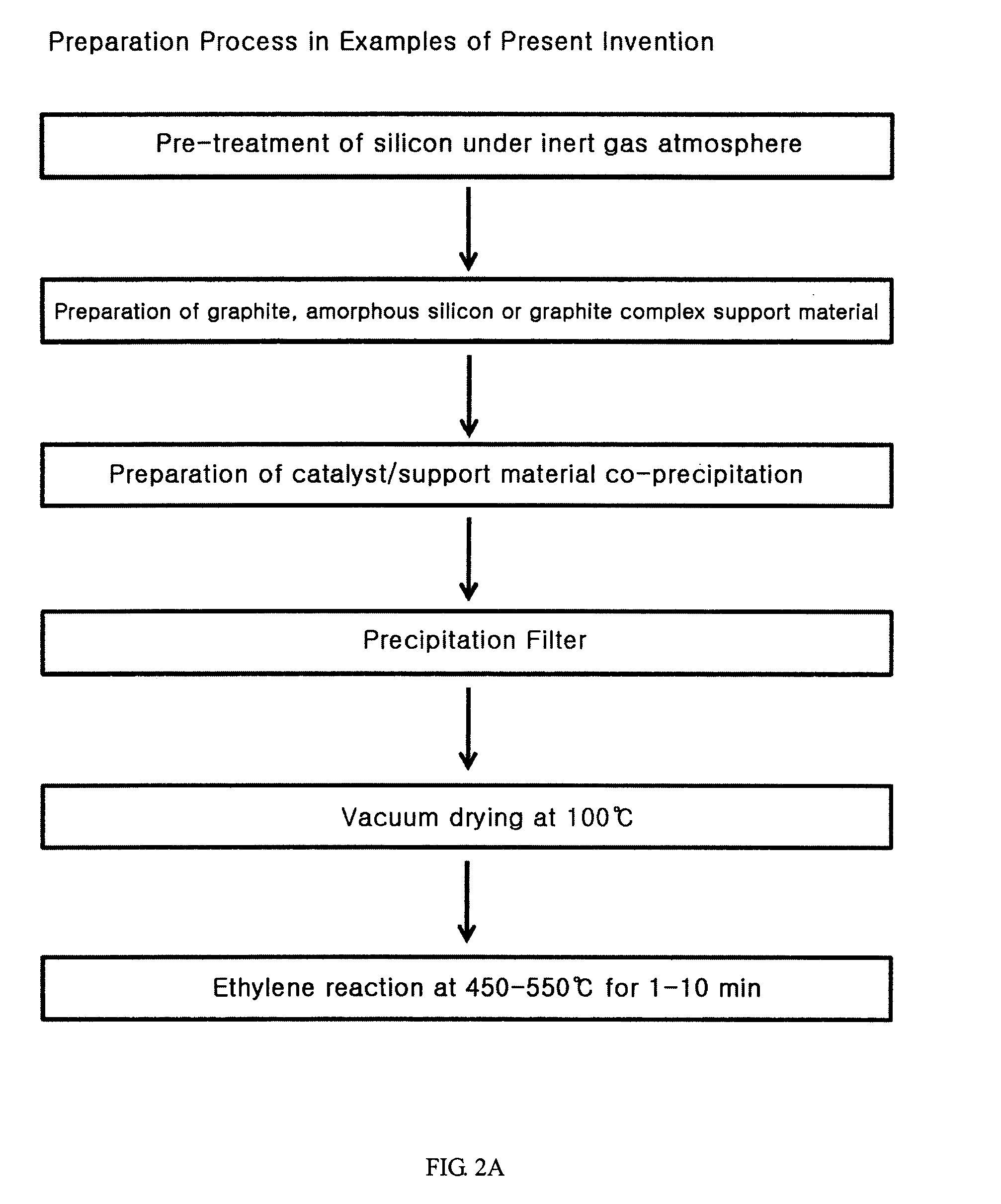Anode active material hybridizing carbon nano fibers for lithium secondary battery
a lithium secondary battery and active material technology, applied in the direction of metal/metal-oxide/metal-hydroxide catalysts, cell components, physical/chemical process catalysts, etc., can solve the problem of increasing the non-reversible capacity of the battery, and improving the anode active material
- Summary
- Abstract
- Description
- Claims
- Application Information
AI Technical Summary
Problems solved by technology
Method used
Image
Examples
preparation example 1
Preparation of a Negative Electrode Containing Natural Graphite Anode Material Hybridized with Carbon Nano Fibers
[0050]9 g of natural graphite, 5.09 g of nickel nitrate (Ni(NO3)26H2O), 0.5 g of ammonium bicarbonate (NH4HCO3) and 300 ml of water are mixed for 1 hour to prepare suspension. The removal of water content is performed by filtering the obtained suspension using a funnel filter. Then, the obtained solid content is dried using a vacuum oven at 100° C. for 24 hours. 1 g of dried graphite solid content is coated on the quartz plate. Using a horizontal quartz tube, the obtained material is heated from 100° C. to 550° C. in a heating velocity of 10° C. / min with flowing helium:hydrogen mixed gas (160 ml / min:40 ml / min). The material is laid at 550° C. for 2 hours. The gas phase carbonizing reaction is carried out for 5 min by flowing ethylene:hydrogen:helium (80 ml / min:40 ml / min: 80 ml / min) mixed gas. It has been revealed that the amount of the synthesized carbon nano fiber is 23 ...
preparation example 2
Preparation of a Negative Electrode Containing Natural Graphite Anode Material Hybridized with Carbon Nano Fibers
[0052]10 g of natural graphite, 0.79 g of nickel nitrate (Ni(NO3)26H2O), 0.29 g of iron nitrate (Fe(NO3)29H2O), 1.0 g of ammonium bicarbonate (NH4HCO3) and 300 ml of water are mixed for 1 hour to prepare suspension. The removal of water content is performed by filtering the obtained suspension using a funnel filter. Then, the obtained solid content is dried using a vacuum oven at 100° C. for 24 hours. 1 g of dried graphite solid content is coated on the quartz plate. Using a horizontal quartz tube, the obtained material is heated from 100° C. to 580° C. in a heating velocity of 10° C. / min with flowing helium:hydrogen mixed gas (160 ml / min:40 ml / min). The material is laid at 580° C. for 2 hours. The gas phase carbonizing reaction is carried out for 30 min by flowing carbon monooxide:hydrogen (160 ml / min:40 ml / min) mixed gas. It has been revealed that the amount of the synt...
preparation example 3
Preparation of a Negative Electrode Containing Amorphous Silicon Anode Material Hybridized with Carbon Nano Fibers
[0054]50 g of crystalline silicon and 500 g of metal sphere having 10 mm diameter are laid on 500 ml of metal bowl in argon atmosphere. Using the planetary mill, crystalline silicon is milled with rotation at 200 rpm. The milling time is 3 hours (FIG. 7). 10 g of milled partially amorphous silicon powder, 0.99 g of cobalt nitrate (Co(NO3)39H2O), 2.2 g of ammonium bicarbonate (NH4HCO3) and 300 ml of water are mixed for 1 hour to prepare suspension. The removal of water content is performed by filtering the obtained suspension using a funnel filter. Then, the obtained solid content is dried using a vacuum oven at 100° C. for 24 hours. 1 g of dried graphite solid content is coated on the quartz plate. Using a horizontal quartz tube, the obtained material is heated from 100° C. to 550° C. in a heating velocity of 10° C. / min with flowing helium:hydrogen mixed gas (160 ml / min:...
PUM
| Property | Measurement | Unit |
|---|---|---|
| thickness | aaaaa | aaaaa |
| diameter | aaaaa | aaaaa |
| thickness | aaaaa | aaaaa |
Abstract
Description
Claims
Application Information
 Login to View More
Login to View More - R&D
- Intellectual Property
- Life Sciences
- Materials
- Tech Scout
- Unparalleled Data Quality
- Higher Quality Content
- 60% Fewer Hallucinations
Browse by: Latest US Patents, China's latest patents, Technical Efficacy Thesaurus, Application Domain, Technology Topic, Popular Technical Reports.
© 2025 PatSnap. All rights reserved.Legal|Privacy policy|Modern Slavery Act Transparency Statement|Sitemap|About US| Contact US: help@patsnap.com



